Grant Hewlett boasts an extensive career of over 25 years in the realm of visual effects. In 2013, he co-founded the company Axis Studios. His career has seen him contribute to a diverse range of shows including Happy!, A Discovery of Witches, Outlander, and Matilda: The Musical.
What is your background?
I’ve been in Visual Effects since the late nineties, starting out as a CG generalist. I’ve worked in different areas like Matchmove, lighting, FX, and compositing for projects in Cinematics, Commercials, TV, and Film. For the last 10 years, I’ve been a VFX Supervisor. After leaving a VFX studio I co- founded and ran for a decade until 2020, I’m now focused on production- side VFX Supervision.
How did you get involved on this movie?
I was working for Cinesite on Matilda as VFX Supervisor and they asked me if I was interested in this movie. I was a fan of the original movie, couple that with the opportunity to work with Doug Liman and Joel Silver —how could I say No?
How was the collaboration with Director Doug Liman?
Doug has made some amazing action movies, so I was both excited and a bit nervous to meet him. I quickly discovered Doug is an artist, always exploring different ideas, evolving and feeling his way intuitively. He loves getting ideas and inspiration from his creative team —weaving these ideas to create something new. Coming from a design background, I really liked this approach and had a great time working with Doug. It was a one-of-a-kind creative experience that I’ll probably never have again in my career.
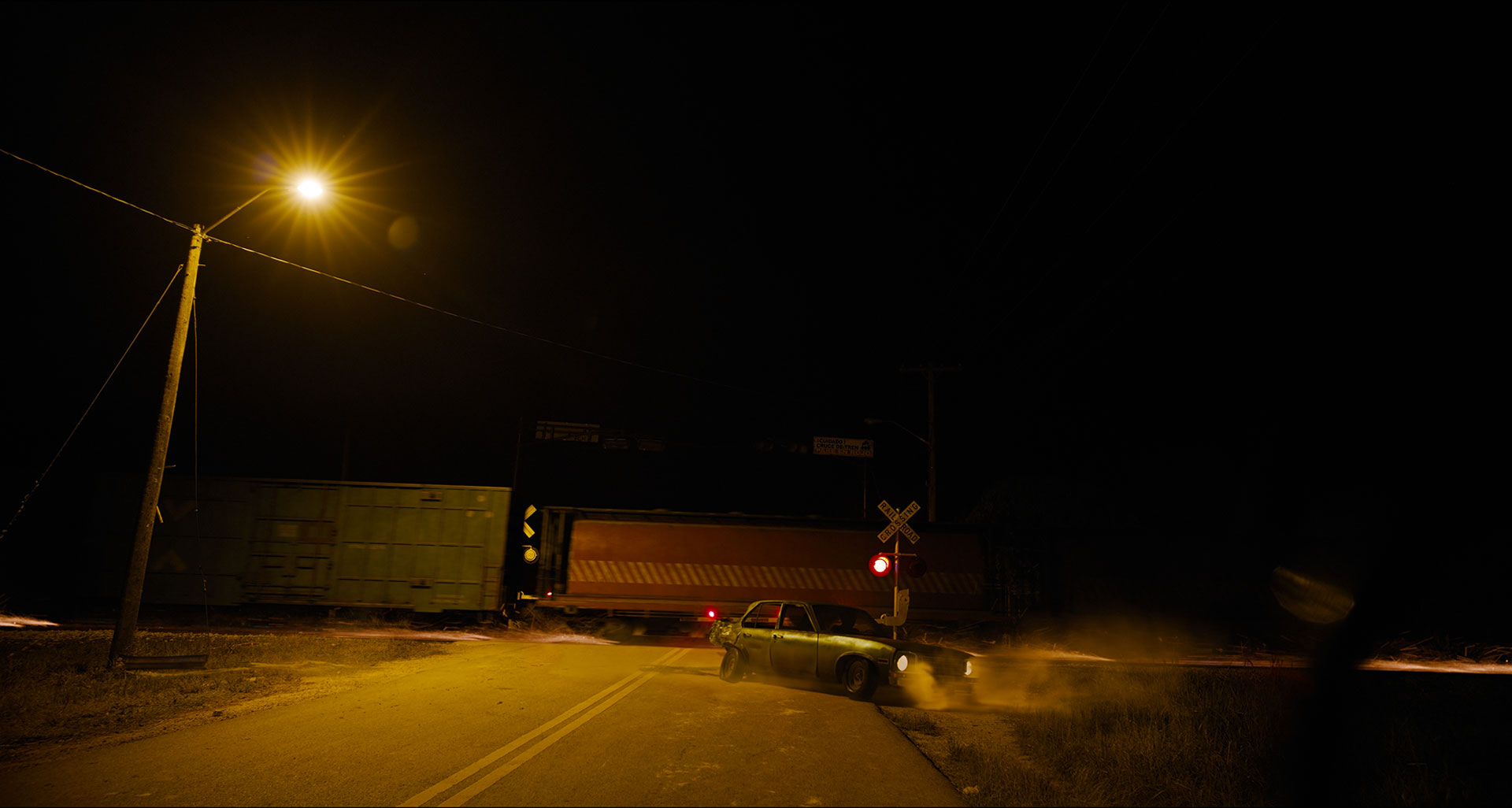
How did you organize the work with your VFX Producer?
At the start of the show Jenn Sheer was the VFX Producer and I worked with Jenn at the prep & shooting stage. At the start of the movie all of the work was going to be placed at Cinesite. As the show grew in size other vendors were added based on Jenns previous relationships with those vendors.
What is the your role on set and how do you work with other departments?
My main role on-set was to be close to Doug and be ready to react to any new ideas that may surface as the day unfolds —he works quickly and intuitively so things change fast. We had a great data wrangler, Haley Shepard, who took care of all of the on set data capture allowing me to focus on approach.
During prep I had the time to talk with the other HODS about things that involved us both. I did a fair bit of previz to explain various layouts and shooting angles. My main day to day contact was with Stunts and Makeup. The stunt guys were great to work with, unlike VFX everything is so immediate, they would just show me fights or ideas in real time and we would work together to solve problems. It was great fun. Our Hair and Make-Up designer Flora Moody was also a great help in planning our additional tattoo fixes and wound/blood work required in the fights.
How do you approach orchestrating the crowd during a MMA fight in the stadium?
The crowd for the UFC fight is actually a real crowd. It was going to be a build for a long time but I think Producer Joel Silver managed to get a deal to shoot in between fights on a qualifying day. So the whole crowd is real apart from a small little 2D patch here and there to fill in some gaps. Easter Egg — Joel is actually in the crowd, he?s wearing a yellow shirt in the front row.
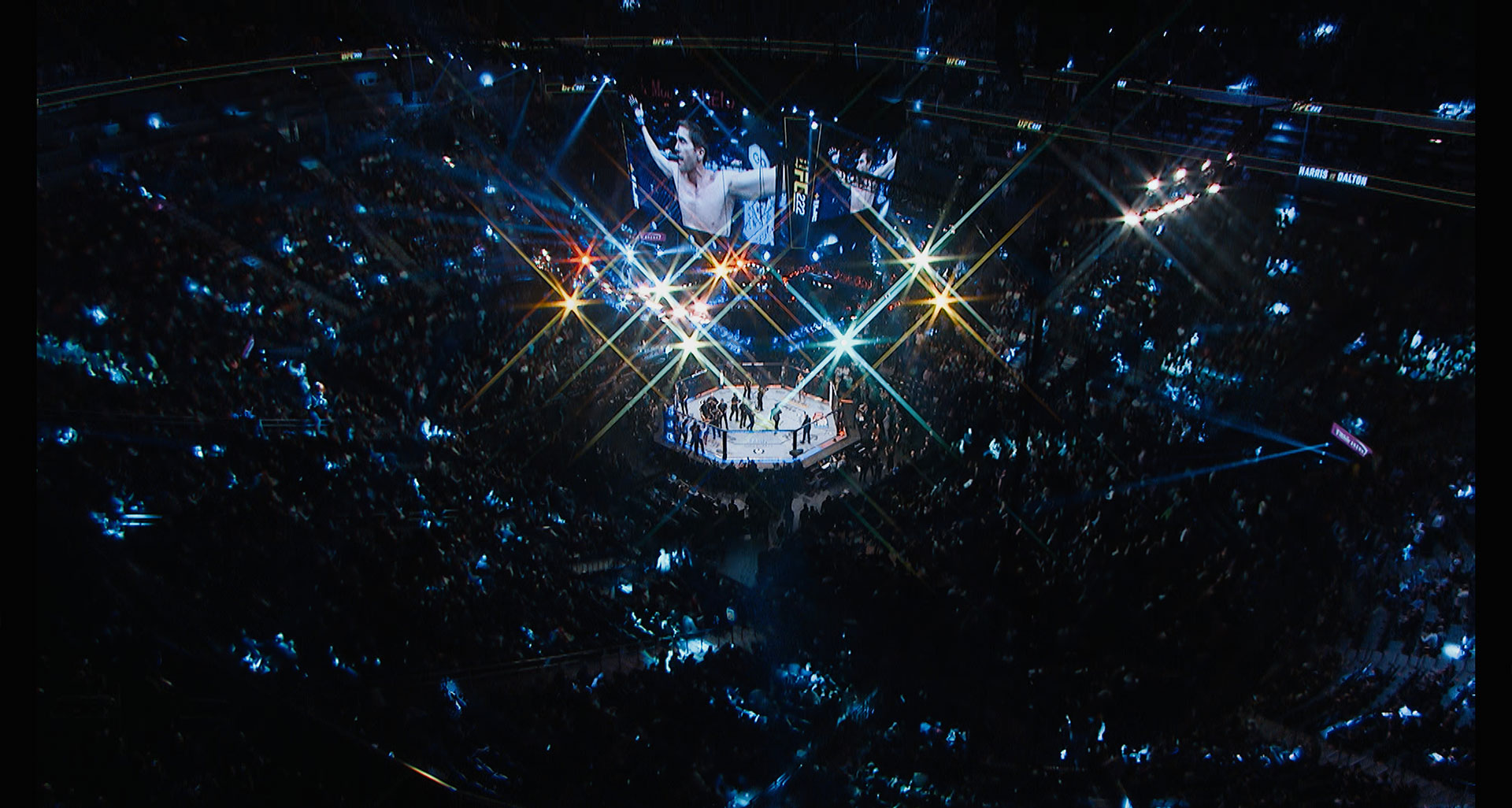
Can you elaborate about the creation of the crowd and the stadium?
So as I mentioned above the UFC crowd was real but we also shot portions of the fight in another area called The Apex. The Apex was built during covid to film televised fights without a crowd. The ring was a perfect replica of the main ring in Las Vegas. We added a panoramic DMP background, flashes and some 2D crowd to those shots to match the wide shots.
Could you elaborate on the intricate process behind creating invisible visual effects for the various combat sequences and stunts?
All of the fights had their own unique challenges but I will talk about the opening fight as that had all of the challenges in one fight. The A/B fight work as it was called by Garrett Warren (2nd Unit Director / Stunt Co-Ordinator) was something completely new. Garrett had been toying with the idea of hitting people with pads or other objects and people hitting pads for a while. The pads are often used when you see people sparring. When Doug laid out his vision for the fights Garrett and I got to work making a plan for the opening fight. Essentially the technique involves shooting multiple layers. The “A? is the puncher (they hit a pad) The “B? someone being punched (they are hit by a pad). We then shoot some alternate takes, background passes and slow action passes.
The slow action passes help for scenes where there?s a lot of movement and occlusion of faces. It has a lot less motion blur and most importantly does not have a pad present in the plate. The beauty of this approach is you feel the punch on both sides of the action, the body dynamics of the A and B side is just right, you really feel the impact.
While Garrett?s focus in prep was on choreography, my focus was on methodology and producing a test shot for Doug. The methodology for shooting was crucial so that it could all be shot efficiently. We had two fast moving fighters, a moving, continuous camera move and a crowd in the background —it was complex. My work was breaking down the passes and providing a step by step method for capturing and testing what we needed on the day. We planned out “Dance Steps? for each character, we did live compositing on the day to check lineup and a few other tricks so that we knew we had what we needed to reconstruct the passes into the final fight.
Ultimately the test fight shot and the methodology we produced in prep gave Doug the confidence that this was going to work.
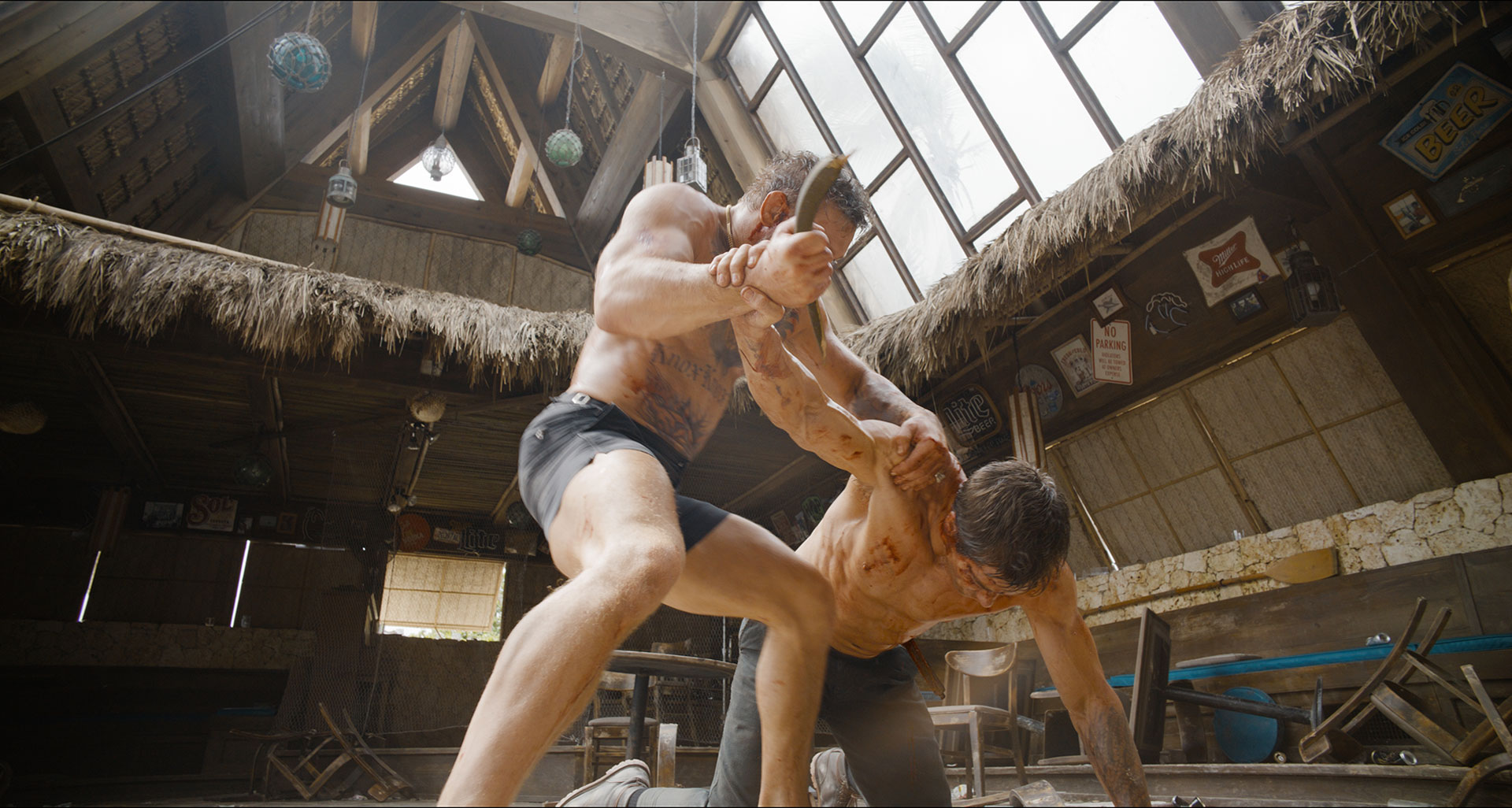
How do you ensure that these effects seamlessly blend into the action?
Mainly, judicious use of motion blur. The fights are so fast that motion blur helped us enormously. Henry Braham, the DOP, operated every shot himself and contributed enormously to the look of the fights employing seamless whip pans, camera dips & body wipes into the camera work. We had a great live action base for the shots with no slo-mo. Doug is not a fan of slo-mo and I agree it?s over done in action movies, it takes you out of the action. So we did some careful compositing and we kept the majority of what was filmed for real. I am not saying it was easy, it was painstaking work. Cinesite did an amazing job polishing the shots.
What specific techniques and technologies are employed to achieve invisible visual effects in high-energy fight scenes and stunts?
I think I touched on this above but I would also like to say the fights are really a very non-technical exercise. It?s very old school and really only employs VFX for that final invisible touch. From a technology perspective, camera tape & my iPhone were the most useful tools to quickly evaluate what we had shot. Things had to be in the correct place and the timing across takes had to work. We used the tape and LEDs to make sure our performers were in near enough the same place across takes. I used my iPhone to quickly check and compare takes with Doug, kind of like a 3rd monitor
I also don?t think it would have been possible without the grit and determination of Garrett, who is a force of nature. In addition, Derek Pueblo who is part of the stunts team did the live compositing using Premiere. Derek?s work was crucial in making sure we had the coverage we needed.
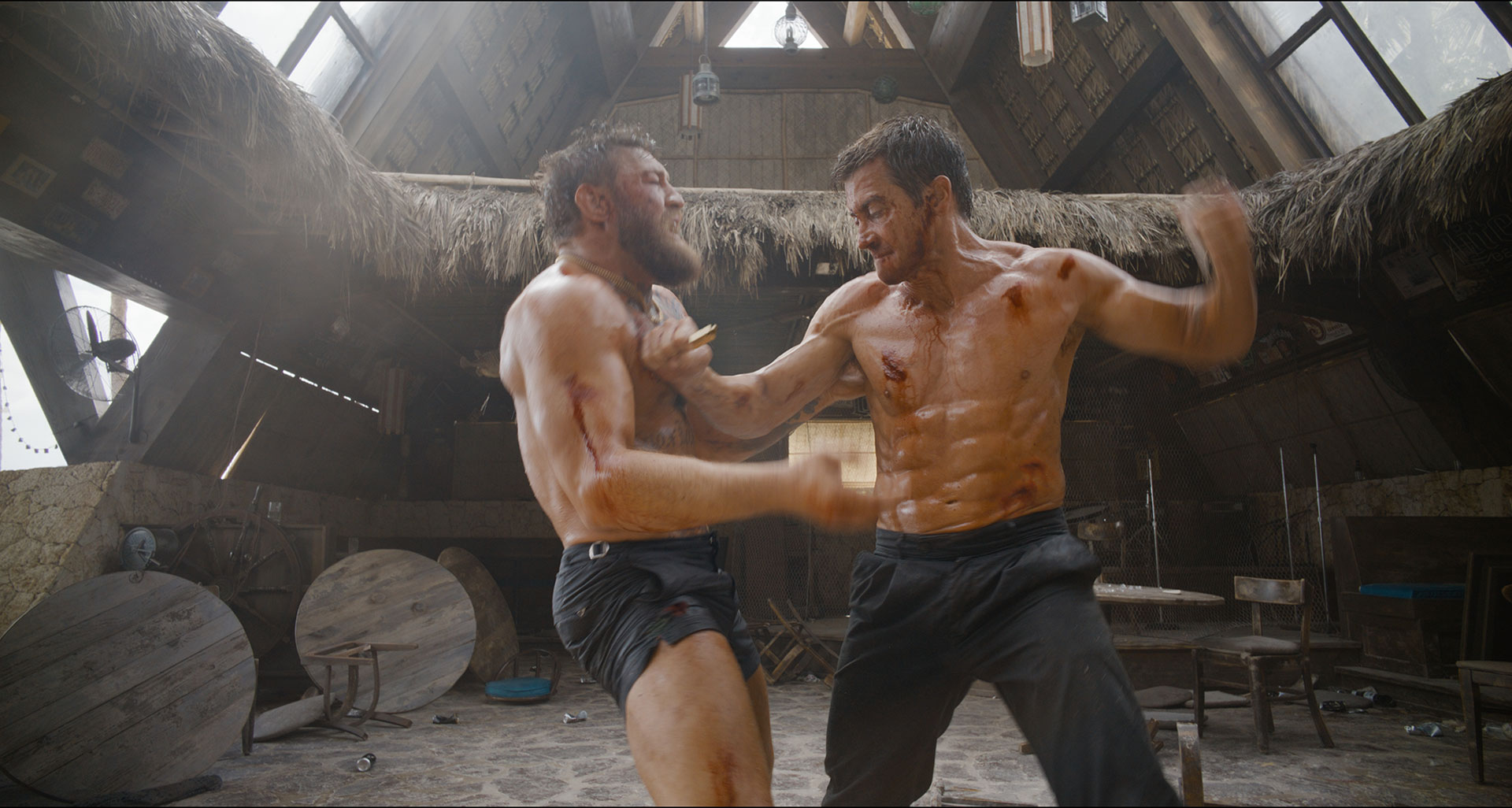
In tackling the creation of invisible visual effects for intense combat sequences and stunts, what challenges do you typically encounter during production?
The primary challenges were due to real world things like, “Oh that pad on the floor is 8 inches thick?. Having very thick pads was necessary for safety reason but added a lot of complexity when repositioning the main action against the clean plate. Real world lighting issues like rays of light and extreme lighting changes across takes. Sometimes it was adjusting to new ideas from Doug, or in some cases Jake would want to improve on an action. Time was always a factor, there were a lot of takes and we had limited time to get it all in the can.
Could you elaborate on the challenges you faced while orchestrating the oners, particularly in complex or dynamic environments, and how you overcame them during production?
The most challenging place to shoot was the Roadhouse bar after the boat crashes. There was lots of broken furniture and as we moved around shooting inevitably things got moved. Some furniture was also moved deliberately for safety reasons. We also had a lot of safety equipment to deal with mostly large pads. We dealt with the furniture by scanning and building a collection of chairs, stools and tables. We also built crushed cans, broken bottles and beer coasters to populate the dance floor area. Every take also had a comprehensive clean plate with the camera move and tiles. Henry (DOP) did an amazing job, we had clean plates for every shot.
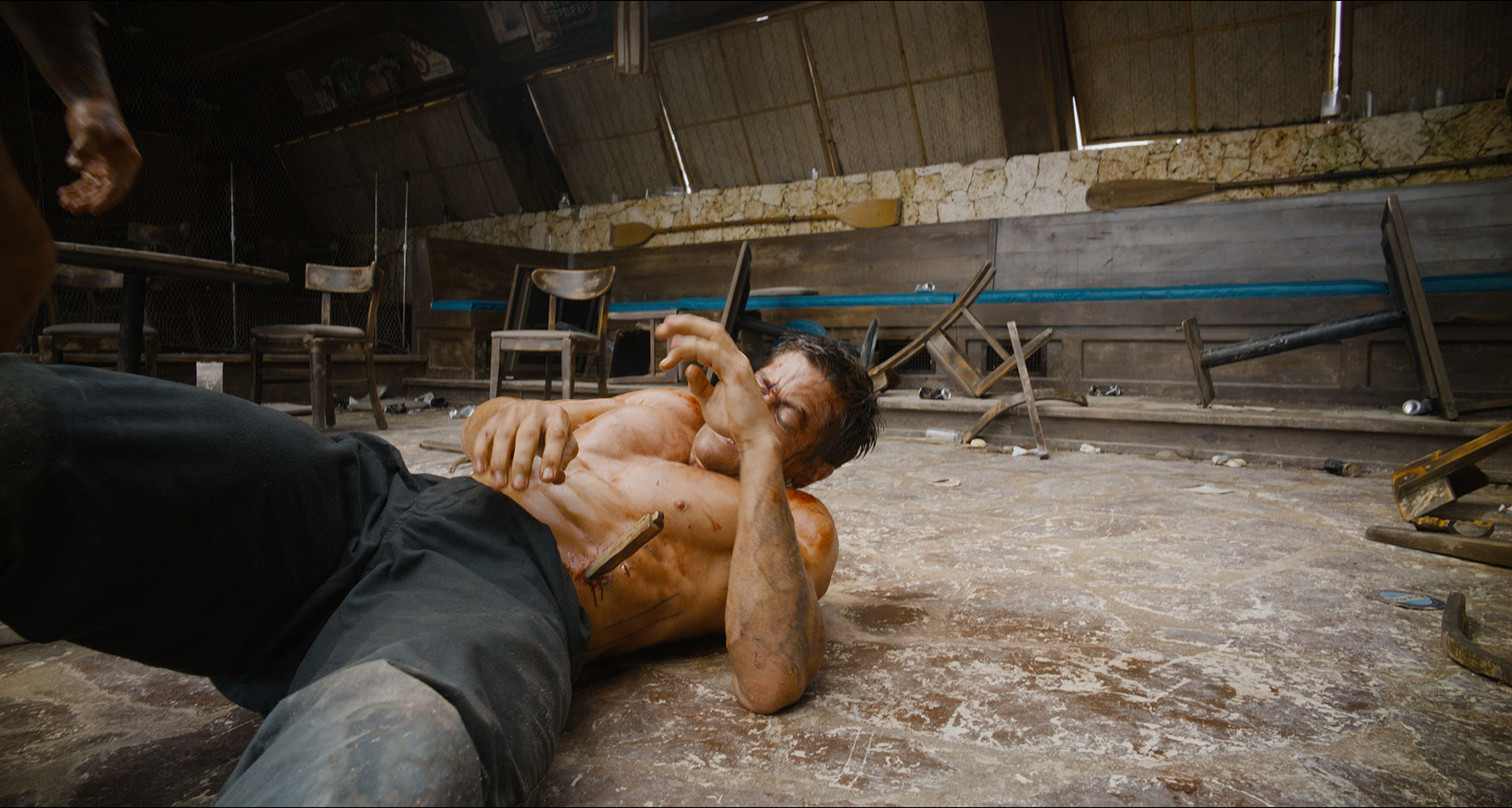
What kind of tricks can you used with the oners?
The Oner?s are all fights —the key to making them continuous is a combo of great choreography, sensitive camera work and sweetening in VFX. Starting with Doug?s vision for the fight Garrett, Henry and myself worked together to realise a seamless final result. A whip pan, a foreground body wiping past the camera, all of these tricks allowed us to split up the action into beats and then rejoin them later for a seamless final shot.
Can you discuss about the environment work for the various locations?
To be honest the environment work on Roadhouse was not that big a VFX undertaking. The location and the sets built by Production Designer Greg Berry were just awesome, totally realistic requiring virtually no changes. We did do some work on the exterior warehouse at the start of the movie as we only had a partial set planned. We used a very simple DMP. The other big environment for us was the water environment and CG Roadhouse deck build. When the Seaclusion (Brandt’s Yacht) blows up a lot of the action in the water with the characters is shot in the tank at Pinewood Dominican Republic. Cinesite created a 360 degree environment and CG water for that whole sequence. They also created every boat that you see in the sequence in CG as well.
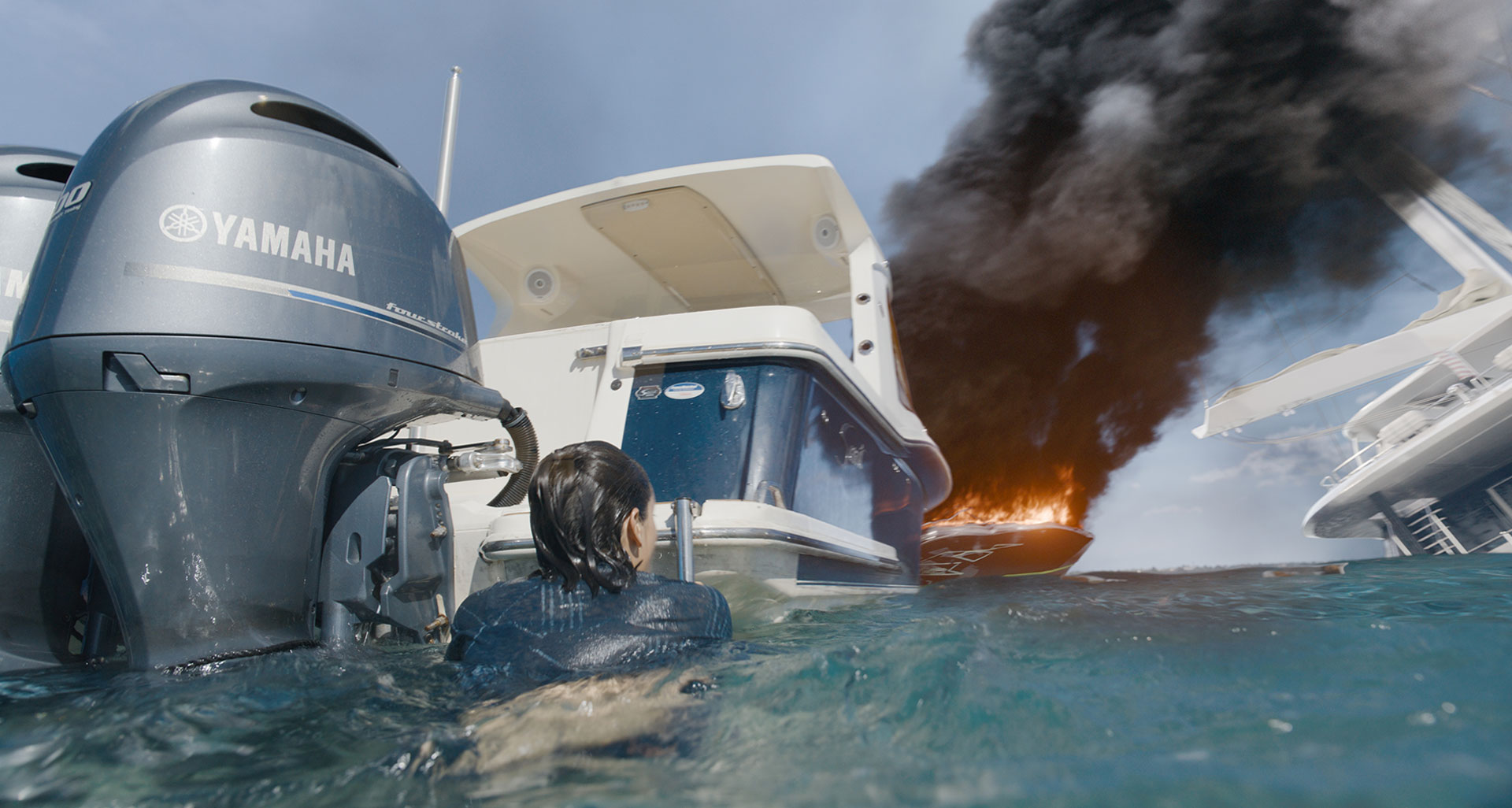
Where were the various locations?
99% of the movie was shot on location in The Dominican Republic. The Roadhouse bar itself was masterminded by Production Designer Greg Berry. The entire bar was fully working, it had a kitchen, bar taps and even a video- village built into the structure. It was a joy to shoot at the Roadhouse, the access for crew, lighting etc Greg just made it all very smooth.
We also shot a lot around the coast, on the Yacht and at the Pinewood tank. The open water work was the hardest as almost everyone had some level of sea sickness. Try looking at a camera monitor in a 2 meter swell for about 30 minutes – Bluurghh!
By the end of day two Dramamine, Salty biscuits and Ginger Ale seemed to help.
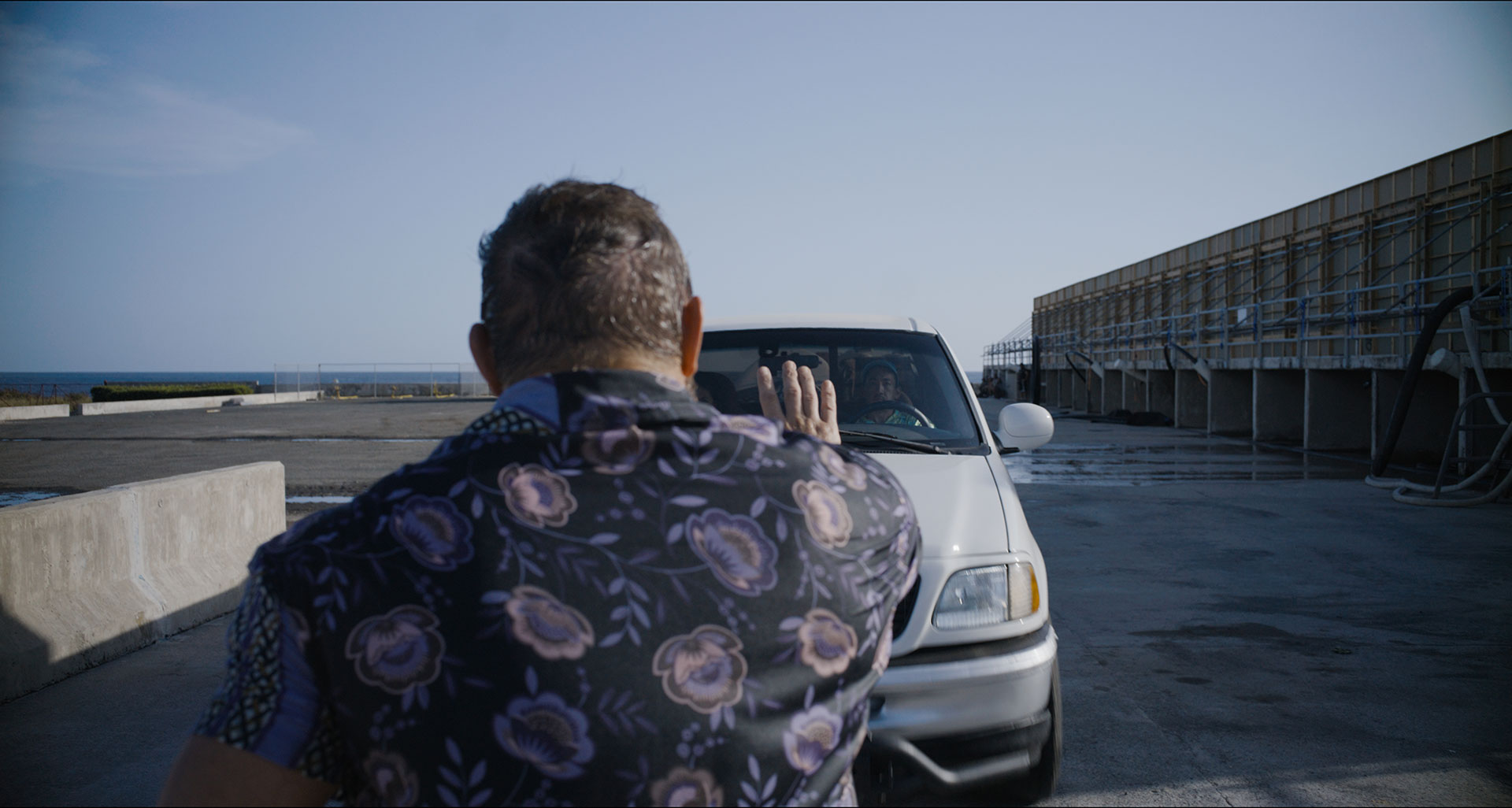
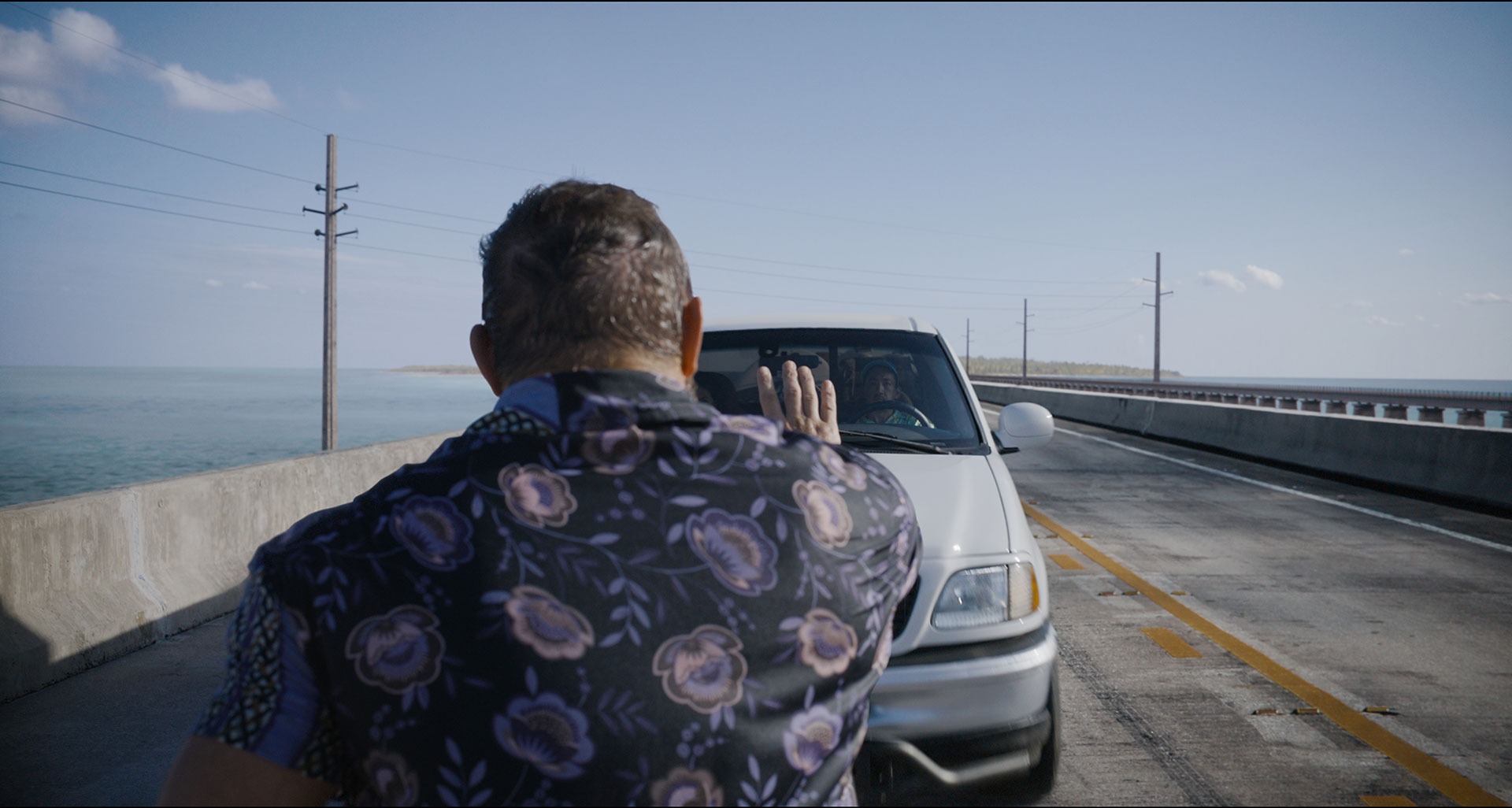
Which location was the most complicated to create?
The area around the Seclusion after the Yacht explodes was complicated. It was mostly a continuity jigsaw puzzle, any changes to layout then had a knock-on effect to every other shot. At that point whilst in layout VFX Producer Lauren Ritchie engaged with Proof to help out with previz. A lot of the shots in that sequence are shot at water level, so incredible amounts of paint work and CG water integration were required by the Cinesite team.
Can you elaborate about the creation and animation of the crocodile?
The Crocodile was something that evolved over the movie, sometimes it was a big thing, sometimes just a sinister swirl in the water. In the end we landed on a something in the middle. A jump scare and some powerful action from the Croc. We studied real crocs and took the big tail swish and body roll as the most impressive parts of how they would attack. Those moves formed the main action when taking down Del.
How did you handle the crocodile interactions with water?
There were plates of the real water where we see poor Del holding on to the rope before he is grabbed by the Croc. We had to keep all of his splashes and then carefully add the CG splashes on the same plane using some careful blending between both. Essentially the Croc is a 3d object and he creates the splashes within the sim, once meshed that water contains all of the environmental reflections and Croc reflections needed for compositing.
How did you approach the filming of the intense boat sequence?
Well this was a pretty big deal, as it was split over so many shooting days and locations. For example when Jake is on the yacht some of that scene is on the real yacht on location, but when he goes downstairs that?s a set, and when he emerges we are back in the Pinewood tank. So again some meticulous planning and mapping out of skies/lighting and sea colour was required to make it seamless.
As I mentioned previously once the boat blows up it?s all a continuity issue with the various boat positions and drifting debris. We did a complete CGI Simulation/animation of the whole sequence from an aerial view to show the progress of the yacht sinking and the debris positions, which helped get everyone on the same page.
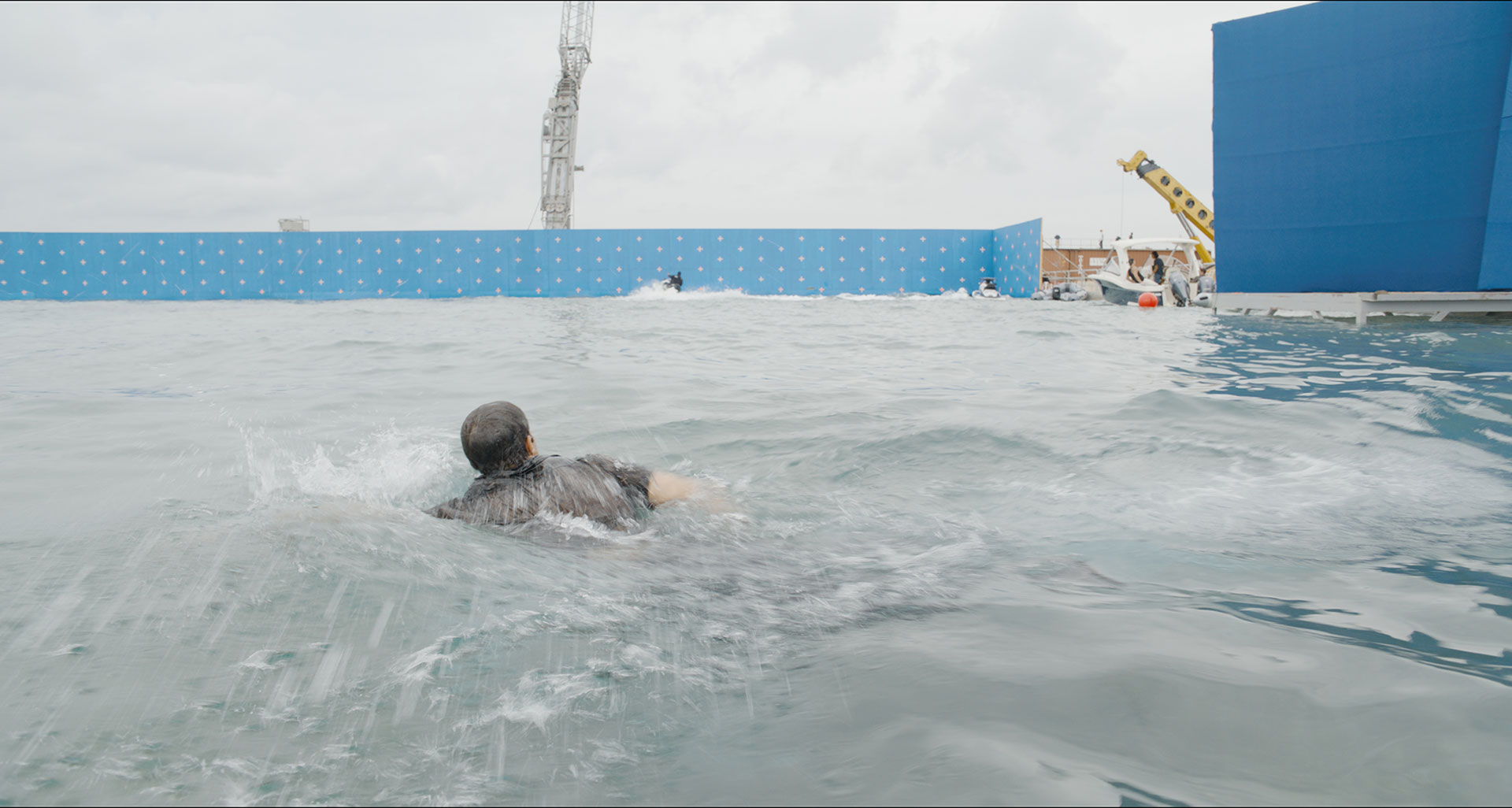
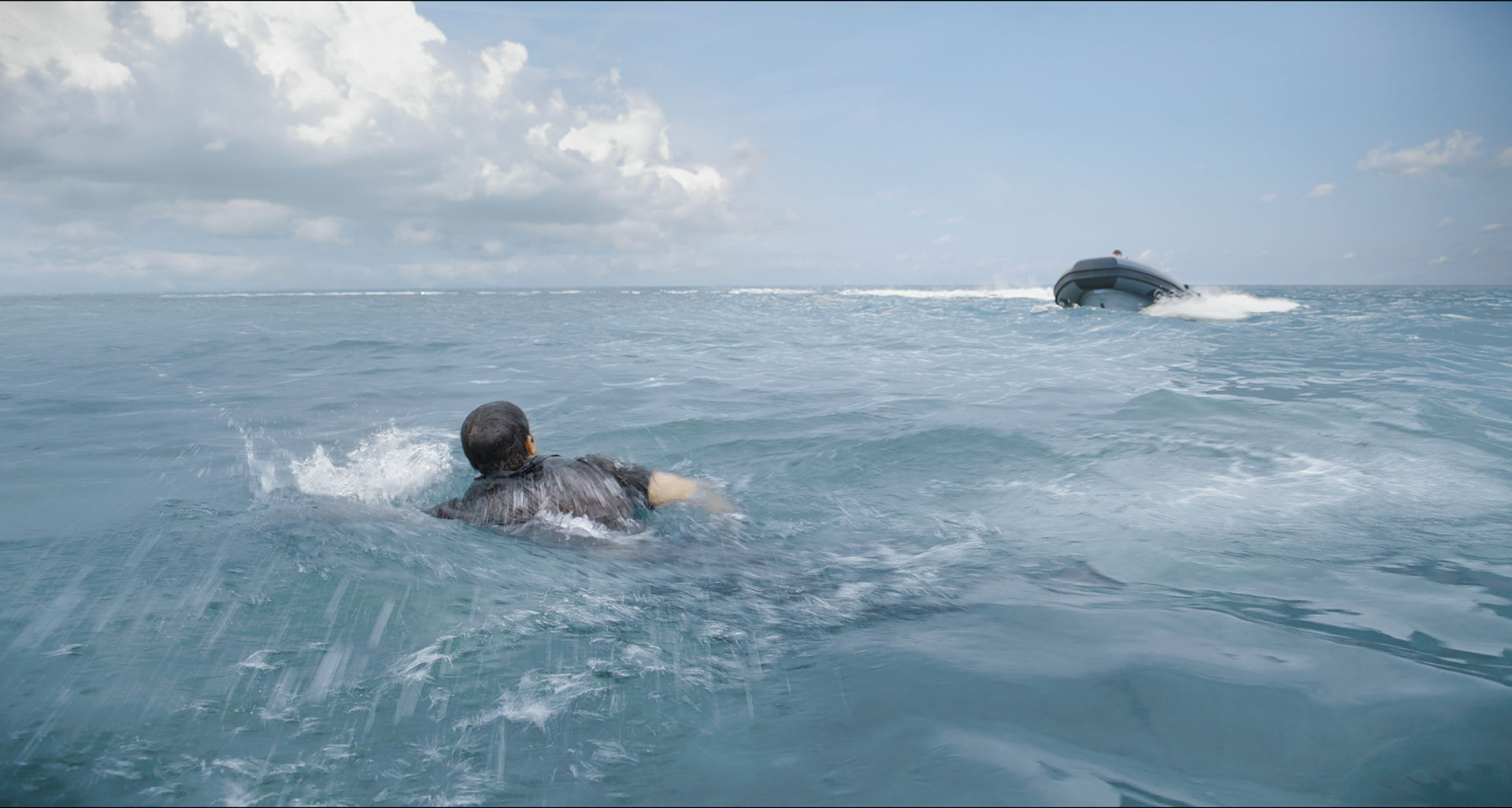
Can you elaborate on the integration of visual effects in capturing the realism of the boat sequence?
The toughest parts of this was the white water and wakes. In some shots we had to match the velocity and quality of the water which I was really worried about. Thankfully Cinesite?s FX team had just completed another water FX heavy show which meant they were battle- hardened going into this sequence and completely nailed it. I would go as far to say they made it look easy and I know it?s not, lots of sims and wedging is required to get that final look.
What were some of the technical challenges encountered during the filming and the VFX work on the boat sequence?
The biggest challenges in the boat sequence were getting all of the shots to match from a continuity POV. Making sure the land and skies and sun all match up from shot to shot. It?s not really technical as such more attention to detail, this stuff can really catch you out. From a VFX technical perspective the burning man shot coming out of the water was tough as it had everything. It had a close up CGI Yacht extension, all BG boats were CGI one being on fire, we had to track and roto-aim the fire guy and make him displace smoke as Jake punches him. All of this while keeping the live action water from the tank in a whip pan shot – pretty tough.
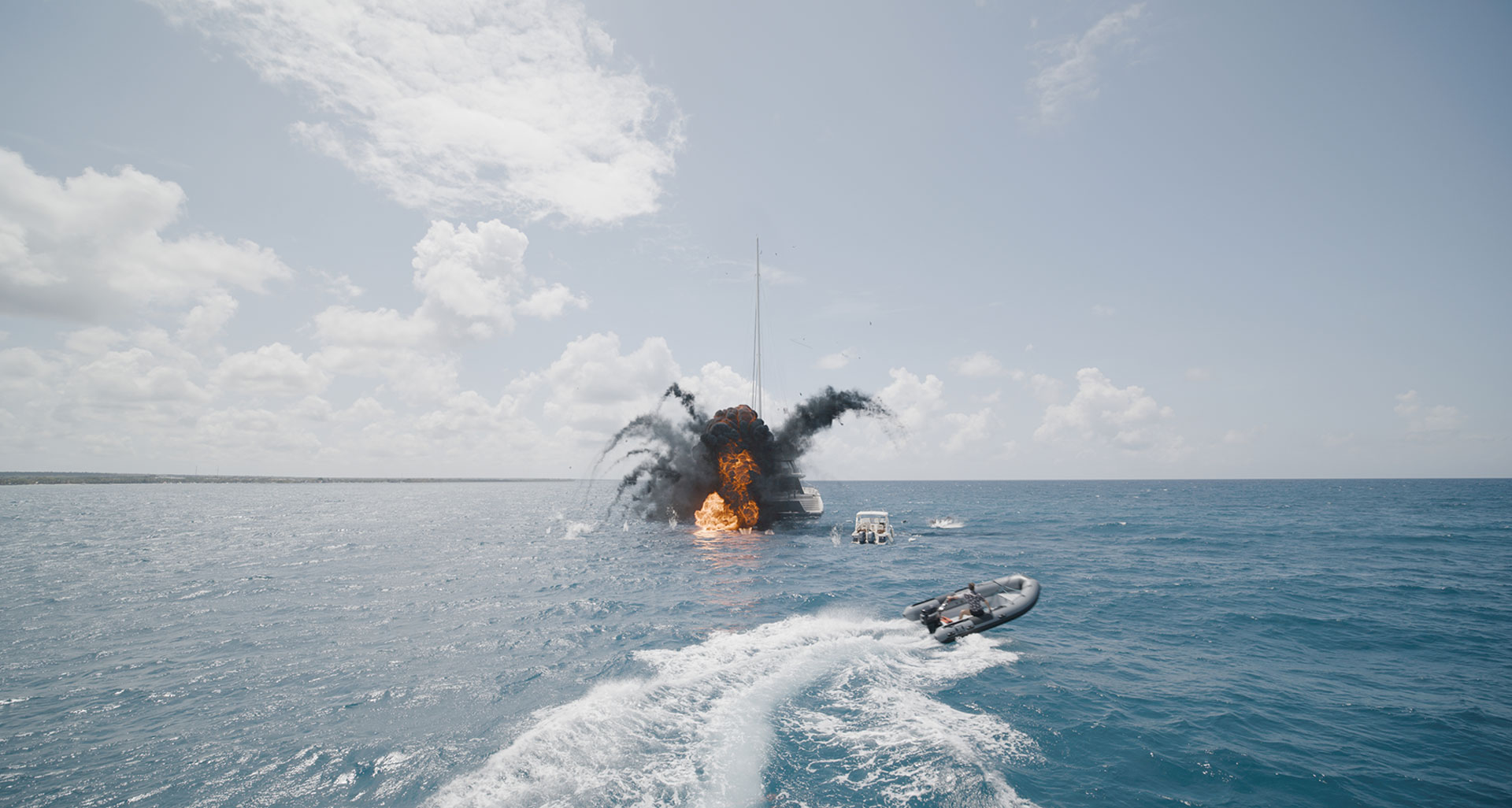
Were there any memorable moments or scenes from the movie that you found particularly rewarding or challenging to work on from a visual effects standpoint?
Shooting the first fight of the movie at Warehouse with Post Malone was pretty full on, scary and exciting. There was so much happening and a lot of technical issues with playback equipment. We stuck to our plan, adapted and got a great looking sequence. After that night everything seemed a little easier.
Looking back on the project, what aspects of the visual effects are you most proud of?
The fights for sure. They were something nobody has ever done before in a movie —you can?t often say that in the world of VFX. They were new, challenging and required a lot of collaboration to pull off and so were very rewarding.
After our final delivery I caught up with Doug and he was super happy with the work. I guess I was pretty proud in that moment having a legend like Doug say we did a great job —sounds cheesy but its true.
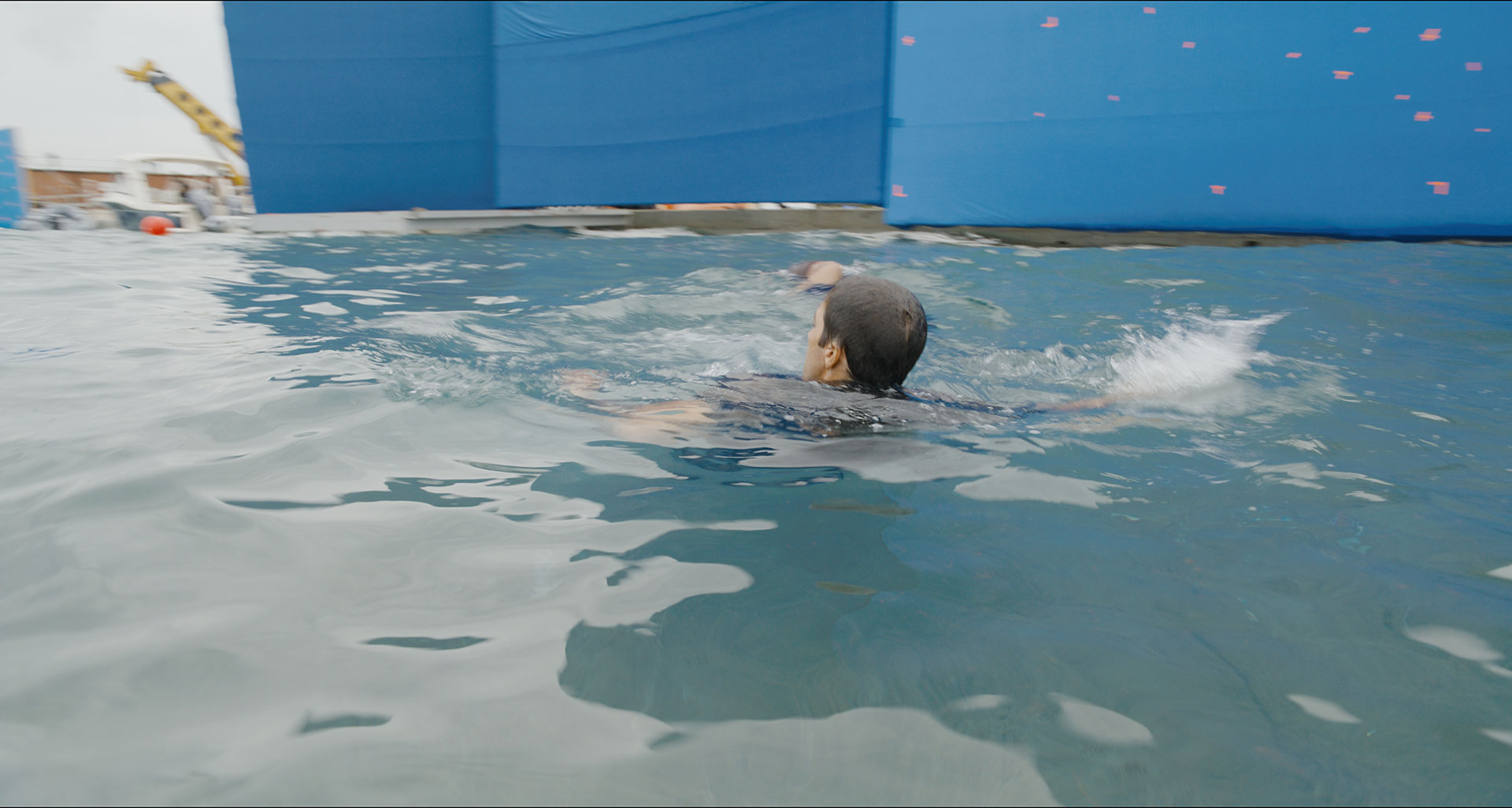
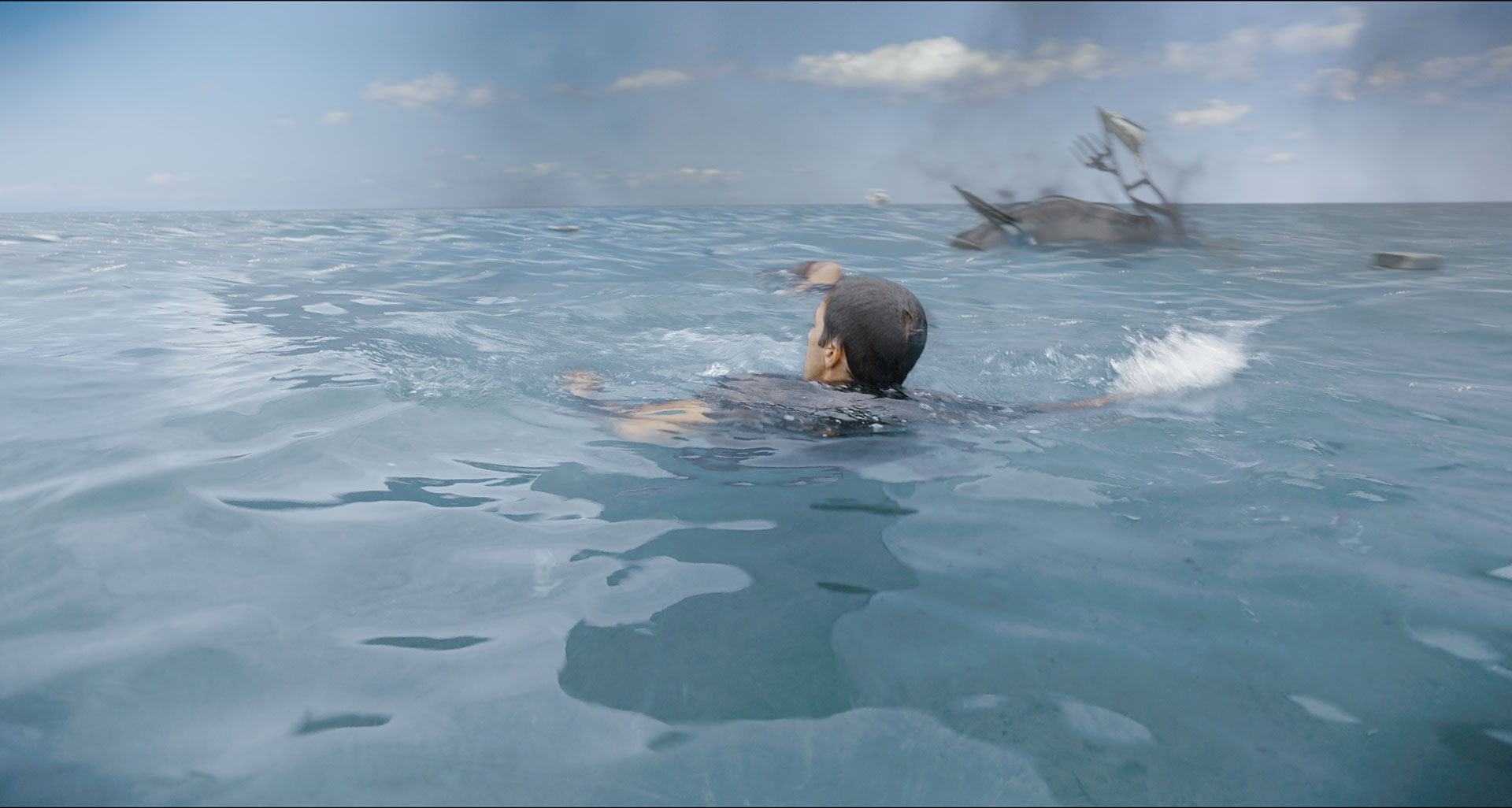
Tricky question, what is your favorite shot or sequence?
Oh that’s a tough one but I think maybe the opening fight. We all had so much invested in that fight. Its the coming together of Doug vision, amazing fight choreography, great camera work and a sprinkle of VFX magic.
How long have you worked on this show?
I worked on the show for around 14 months. 15 weeks in the Dominican Republic on location and the rest in post.
What’s the VFX shots count?
I think it was something around 400 shots.
What is your next project?
Good question! The current climate is slow but I am talking to various people about various shows. I would love to do another action movie —it was a lot of fun.
What are the four movies that gave you the passion for cinema?
Jason and the Argonauts, I was always amazed by the Ray Harryhausen skeleton sequence as a kid. Star Wars obviously as it blew my mind when it came out. I am also a massive Dune fan and have watched the original maybe 50 times. I am also very fond of Barry Lyndon by Stanley Kubrick. The lighting by John Alcott is truly amazing, its a beautiful film.
A big thanks for your time.
WANT TO KNOW MORE?
Cinesite: Dedicated page about Road House on Cinesite website.
Prime Video: You can watch Road House on Prime Video now.
© Vincent Frei – The Art of VFX – 2024






